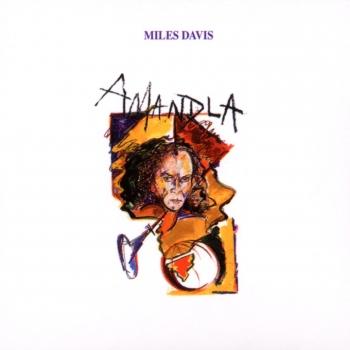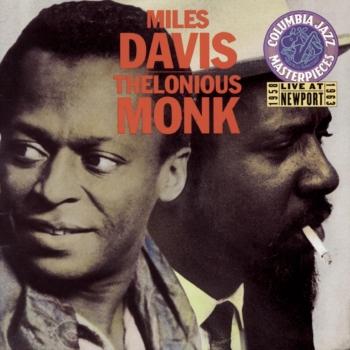
Sketches of Spain Miles Davis
Album info
Album-Release:
1960
HRA-Release:
19.02.2015
Album including Album cover
I`m sorry!
Dear HIGHRESAUDIO Visitor,
due to territorial constraints and also different releases dates in each country you currently can`t purchase this album. We are updating our release dates twice a week. So, please feel free to check from time-to-time, if the album is available for your country.
We suggest, that you bookmark the album and use our Short List function.
Thank you for your understanding and patience.
Yours sincerely, HIGHRESAUDIO
- 1 Concierto de Aranjuez: Adagio 16:21
- 2 Will O' the Wisp 03:47
- 3 The Pan Piper 03:52
- 4 Saeta 05:33
- 5 Solea 15:39
Info for Sketches of Spain
„Sketches of Spain“ by Miles Davis: Each of Miles' four orchestral album collaborations with arranger-composer Gil Evans - Miles Ahead (1957), Porgy And Bess (1958), Sketches Of Spain (1959), and Quiet Nights (1962) - was a masterwork in its own right. „Sketches of Spain“ was Miles' first post-Kind Of Blue project, and retains that LP's modal feel on the 16-minute version of Rodrigo's 'Concierto de Aranjuez,' the inspiration for Davis and Evans. Liner notes for the 2009 edition of „Sketches of Spain“ are written by composer academician Gunther Schuller, whose hundreds of accomplishments in jazz include playing French horn for Miles on the 1949-50 Birth Of The Cool sessions. „Sketches of Spain“ was recorded in 1959 and released in 1960.
This historic edition presents the original album augmented by alternate and extra tracks, illustrating how this synergy developed. 'The Maids of Cádiz' (from the 1957 album Miles Ahead) is the first example of Gil Evans adapting a composition of Spanish origin for an orchestral collaboration with Miles. The live performance of 'Concierto de Aranjuez,' the only such ever given, took place in Carnegie Hall in 1961, offering a rare, heightened performance of this centerpiece. 'Teo,' (from the 1961 album Someday My Prince Will Come) a small group piece dedicated to Producer Teo Macero, is simpatico with 'Solea'--the other jewel from the original album, with its orchestral palette that is, in a word, sublime.
The conception of „Sketches of Spain“ in 1960, can be placed in the „most melodic era“ of Miles Davis. It is one of his most accessible and less improvisational albums, some even outclassed it from the reigns of Jazz. This is one of the four albums where Miles and Gil Evans (arranger & conductor) were together with a small orchestra of horns and percussion, and it was fueled by Spanish melodies that fascinated Davis to the point he needed to get into them and go beyond: El Concierto de Arajuez by Joaqu_n Rodrigo and El Amor Brujo by Manuel de Falla. Davis and Evans put something together that every single music lover should possess, a sketch of some place he'd never been to. As Miles said, „It's music, and i like it'.
Miles Davis, trumpet, flugelhorn
Paul Chambers, bass
Jimmy Cobb, drums
Elvin Jones, percussion
The Gil Evans Orchestra:
Ernie Royal, trumpet
Taft Jordan, trumpet
Louis Mucci, trumpet
Johnny Coles, trumpet
Dick Hixon, trombone
Frank Rehak, trombone
Jimmy Buffington, French horn
John Barrows, French horn
Earl Chapin, French horn
Joe Singer, French horn
Tony Miranda, French horn
Jimmy McAllister, tuba
Bill Barber, tuba
Al Block, flute
Eddie Caine, flugelhorn
Harold Feldman, flute, clarinet, oboe
Danny Bank, bass clarinet
Romeo Penque, oboe
Jack Knitzer, bassoon
Janet Putman, harp
Jose Mangual, percussion
Recorded on November 20, 1959 and March 10, 1960 at Columbia 30th Street Studio, New York
Produced by Teo Macero, Irving Townsend
Digitally remastered
Trumpeter Miles Davis grew up in East St. Louis, Illinois, just across the river from St. Louis, Missouri. His parents were affluent, and had the means to support his musical studies as a boy. He began playing the cornet at age nine, and received his first trumpet at around twelve or thirteen. He studied classical technique, and focused mainly on using a rich, clear tone, something that helped define his sound in later years.
As a teenager, he played in various bands in St. Louis, which was rich with jazz, as big bands often stopped there on tours throughout the Midwest and southern states. The most important experience he had was when he was asked to play in the Billy Eckstine band for a week as a substitute. The group included Charlie Parker, Dizzy Gillespie, and Sara Vaughan. After playing with these stars, Davis knew he had to move to New York to be at the heart of the jazz scene.
In Pursuit of Parker:
In 1944 Davis moved to New York City where he had earned a scholarship to study trumpet at the Juilliard School of Music. Upon arriving however, he sought after Charlie Parker, and meanwhile spent all of his time in jazz clubs listening to bebop. He was transfixed on the music, and grew utterly bored with his classical studies. After less than a year at Juilliard, he dropped out and tried his hand at performing jazz.
Although not particularly stunning, his playing was good enough to finally attract Charlie Parker, and Davis joined his quintet in 1945. He was often criticized for sounding inexperienced, and was compared unfavorably to Dizzy Gillespie and Fats Navarro, who were the leading trumpeters at the time. Both boasted stellar technique and range, neither of which Davis possessed. In spite of this, he made a lasting impression on those who heard him, and his career was soon set aloft.
Cool Jazz and a Rise to Fame:
Encouraged by composer and arranger Gil Evans, Davis formed a group in 1949 that consisted of nine musicians, including Lee Konitz and Gerry Mulligan. The group was larger than most bebop ensembles, and featured more detailed arrangements. The music was characterized by a more subdued mood than earlier styles, and came to be known as cool jazz. In 1949 Davis released the album Birth of the Cool (Captiol Records).
Change of artistic direction became central to Davis’ long and increasingly influential career. After dabbling in hard bop as a leader on four Prestige recordings featuring John Coltrane, he signed with Columbia records and made albums that featured Gil Evans’ arrangements for 19-piece orchestra. These were Miles Ahead, Porgy and Bess, Sketches of Spain, and Quiet Nights. He rose in popularity with these recordings, in part due to his signature sound, which he often enhanced by using a Harmon mute.
Kind of Blue and Beyond:
In 1959 Davis made his pivotal recording, Kind of Blue. It was a departure from all of his previous projects, abandoning complicated melodies for tunes that were sometimes only composed of two chords. This style became known as modal jazz, and it allows the soloist expressive freedom since he does not have to negotiate complex harmonies. Kind of Blue also featured John Coltrane, Cannonball Adderley, and Bill Evans. The album is one of the most influential in jazz, and is Columbia Records’ best-selling jazz record of all time.
In the mid 1960s Davis changed directions again, forming a group with Herbie Hancock, Wayne Shorter, Tony Williams, and Ron Carter. This group was known for the excellence of each individual member, and also for its unique performance approach. Each night the tunes would sound different, as the musicians would sometimes only loosely adhere to the song structures, and often transition from one right into the next. Each player was given the chance to develop his solos extensively. Like all of Davis’ previous groups, this quintet was highly influential.
Late Career:
Despite health problems, drug addiction, and strained personal relationships, Davis continued to play, changing his approach with each new project. In the late 60s and 70s, he began to experiment with electronic instruments, and grooves that were tinged with rock and funk music. Two famous recordings from this period are In a Silent Way and Bitches Brew. By the time the 1980s rolled around, Davis was not only a jazz legacy, but a pop icon, whose music, persona, and fashion style were legendary.
Davis died in 1991, as perhaps the most influential jazz artist ever. His vast body of work continues to be a source of inspiration for today’s musicians. (Jacob Teichroew, About.com Guide)
This album contains no booklet.





































